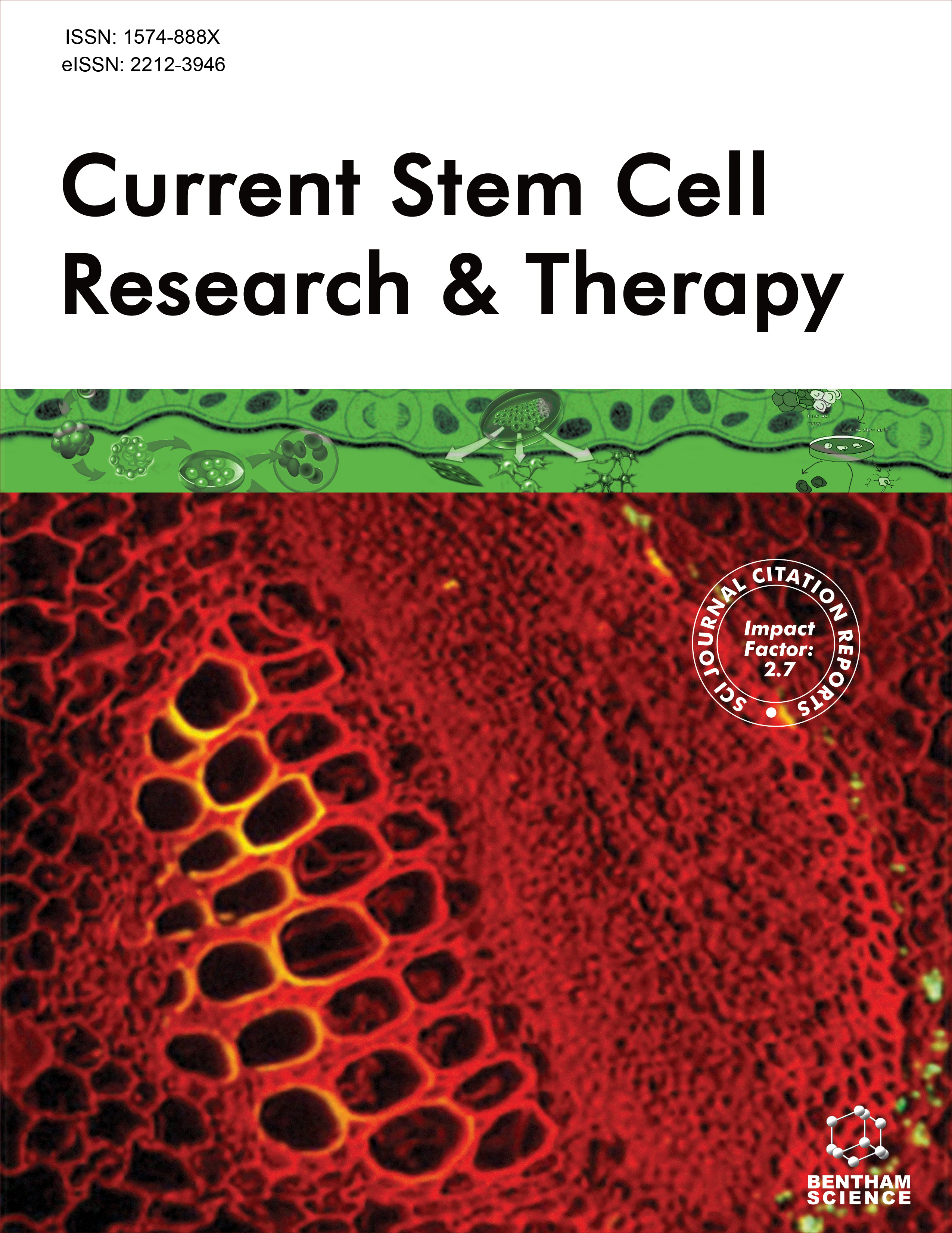- Home
- A-Z Publications
- Current Stem Cell Research & Therapy
- Previous Issues
- Volume 4, Issue 2, 2009
Current Stem Cell Research & Therapy - Volume 4, Issue 2, 2009
Volume 4, Issue 2, 2009
-
-
In or Out Stemness: Comparing Growth Factor Signalling in Mouse Embryonic Stem Cells and Primordial Germ Cells
More LessAuthors: Massimo D. Felici, Donatella Farini and Susanna DolciEmbryonic stem (ES) cells do not exist in nature but, usually produced from the inner cell mass (ICM) of the blastocyst, are considered equivalent to ICM cells captured during a short period of transient self-renewal and pluripotency capability. Although, artificial, ES cells represent a formidable model to investigate fundamental aspects of cell stemness and early embryo development. ES cells are indeed the only stem cell type a Read More
-
-
-
A Review of Gene Expression Profiling of Human Embryonic Stem Cell Lines and their Differentiated Progeny
More LessAuthors: Bhaskar Bhattacharya, Sachin Puri and Raj K. PuriOne of the key characteristics of human embryonic stem cells (hESC) is their ability to proliferate for an indefinite period of time. Previous studies have shown that a unique network of transcription factors are involved in hESC self renewal. Since hESC lines have the potential to differentiate into cells of all three germ layers, cells derived from hESC may be useful for the treatment of a variety of inherited or acquired diseases. Th Read More
-
-
-
Adult Stem Cells as an Alternative Source of Multipotential (Pluripotential) Cells in Regenerative Medicine
More LessEmbryonic stem cells are by definition the master cells capable of differentiating into every type of cells either in vitro or in vivo. Several lines of evidence suggest, however, that adult stem cells and even terminally differentiated somatic cells under appropriate microenvironmental cues are able to be reprogrammed and contribute to a much wider spectrum of differentiated progeny than previously anticipated. This has been Read More
-
-
-
Stemness or Not Stemness? Current Status and Perspectives of Adult Retinal Stem Cells
More LessAuthors: Morgane Locker, Caroline Borday and Muriel PerronMany retinal dystrophies are associated with photoreceptor loss, which causes irreversible blindness. The recent identification of various sources of stem cells in the mammalian retina has raised the possibility that cell-based therapies might be efficient strategies to treat a wide range of incurable eye diseases. A first step towards the successful therapeutic exploitation of these cells is to unravel intrinsic and extrinsic regul Read More
-
-
-
Smooth Muscle Progenitor Cells: Friend or Foe in Vascular Disease?
More LessThe origin of vascular smooth muscle cells that accumulate in the neointima in vascular diseases such as transplant arteriosclerosis, atherosclerosis and restenosis remains subject to much debate. Smooth muscle cells are a highly heterogeneous cell population with different characteristics and markers, and distinct phenotypes in physiological and pathological conditions. Several studies have reported a role for bone marrow-der Read More
-
-
-
Stem Cell Research and Therapy for Liver Disease
More LessAuthors: Nalu Navarro-Alvarez, Alejandro Soto-Gutierrez and Naoya KobayashiLiver failure is a catastrophic illness associated with the death of many patients who are waiting for transplantation. Currently there are no effective treatments for this disease, therefore scientists have paid their attention to the field of stem cells, which has helped to understand the pathogenesis of liver disease, expanded the drug discovery processes, and could potentially be used as an alternative therapy. Recent r Read More
-
-
-
Targeting Stem Cells-Clinical Implications for Cancer Therapy
More LessAuthors: Lan C. Tu, Greg Foltz, Edward Lin, Leroy Hood and Qiang TianCancer stem cells (CSC), also called tumor initiating cells (TIC), are considered to be the origin of replicating malignant tumor cells in a variety of human cancers. Their presence in the tumor may herald malignancy potential, mediate resistance to conventional chemotherapy or radiotherapy, and confer poor survival outcomes. Thus, CSC may serve as critical cellular targets for treatment. The ability to therapeutically target C Read More
-
-
-
Hemopoiesis in Ph-Negative Chronic Myeloproliferative Disorders
More LessAuthors: Emmanouil Spanoudakis and Costas TsatalasChronic myeloproliferative disorders (cMPDs) are clonal hemopoietic malignancies arising at the multipotent stem cell level. These conditions are characterized by increased blood count, marrow hyperplasia and extramedulary hemopoiesis. Vascular events might complicate their course, and transformation to either acute leukemia or myelofibrosis can finally occur. Among cMPDs, Polycythemia Vera (PV), Essential Thrombocyt Read More
-
-
-
Clinical Presentation, Outcome and Risk Factors of Late-Onset Non- Infectious Pulmonary Complications After Allogeneic Stem Cell Transplantation
More LessThe term late-onset non-infectious pulmonary complications (LONIPCs) has been used to refer to events occurring later than 3 months after allogeneic hematopoietic stem transplant (HSCT), such as bronchiolitis obliterans, bronchiolitis obliterans with organizing pneumonia, and lymphocytic or idiopathic interstitial pneumonia. The incidence of LONIPCs varies widely, ranging between 10% and 26%. Median time fo Read More
-
Volumes & issues
-
Volume 20 (2025)
-
Volume 19 (2024)
-
Volume 18 (2023)
-
Volume 17 (2022)
-
Volume 16 (2021)
-
Volume 15 (2020)
-
Volume 14 (2019)
-
Volume 13 (2018)
-
Volume 12 (2017)
-
Volume 11 (2016)
-
Volume 10 (2015)
-
Volume 9 (2014)
-
Volume 8 (2013)
-
Volume 7 (2012)
-
Volume 6 (2011)
-
Volume 5 (2010)
-
Volume 4 (2009)
-
Volume 3 (2008)
-
Volume 2 (2007)
-
Volume 1 (2006)
Most Read This Month
Article
content/journals/cscr
Journal
10
5
false
en


